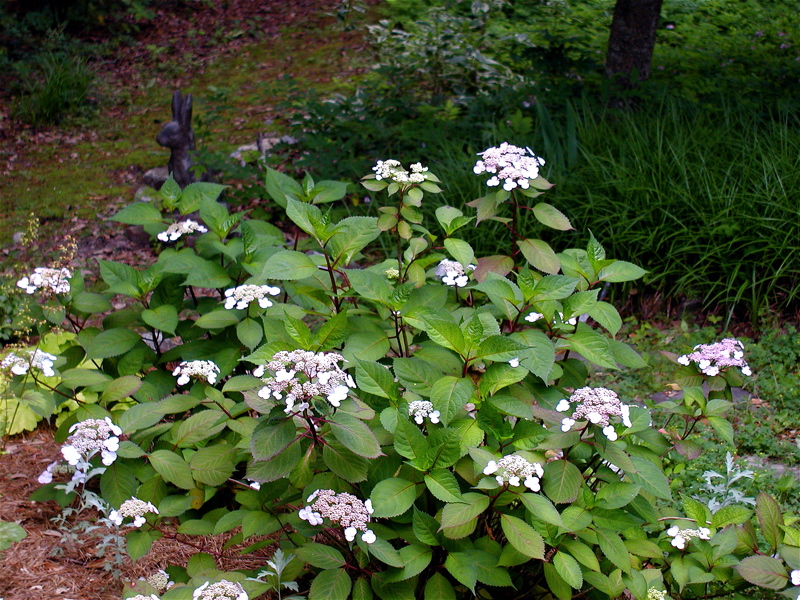A Time to Persevere
 Friday, June 11, 2010 at 8:00AM
Friday, June 11, 2010 at 8:00AM Hot and sticky today with forecasts of more to come, and it's time to retreat from the garden. The grasshoppers, the white flies, the molds and fungus will thrive, while I neglect my duties in favor of air conditioning and icy drinks.
Our summer will test the mettle of both plant and gardener, and the weak ones die or go dormant. I make quick forays in the mornings and evenings, yanking a few weeds and checking on the status of my tomatoes and green beans. I hastily tour other parts of the garden. It's green and lush, but on closer inspection I find leaves that are wilted and pitted with tiny holes. Something has been chomping on the foliage, leaving jagged edges. Weeds are sensing my flagging efforts and are putting on a new offensive, determined to take my paths. I won't let them. I will get them with the hoe this Saturday morning. Early.
Normally, people in my part of the country visit the Gulf this time of year. It is part of our culture. In the summer — and other times, too, if we can get away — we go to the beach. Now a great sadness has descended, and we wonder if the oil has reached our favorite spot. I heard that it has come upon Orange Beach. I am glad I spent a few days at Orange Beach earlier this year, before the greatest oil leak in history began its deadly flow into the Gulf. I sigh when I look back at my photos. It seems that summer has no redemption this year.
But I am an optimist. Gardening has shown me the resilience of the earth, and it has demonstrated resurrection and new life. It has taught me to take up my trowel and persevere, for there will be joy in the morning.
Enough with gloom! Here is what is happening in my garden, today:
Trees are prospering, invigorated by the deep, soaking rains we experienced all spring.
The woodland garden is a quiet retreat.
Hydrangeas are still beautiful.
And a few other flowers bloom, too.top: Caryopteris ( blue mist spirea). Clockwise from above: Asclepsias (butterfly weed); Crepe myrtle; Gardenia; Speedwell
May you never lose hope. May you have courage, and may you have eyes to see things that are beautiful and good.
Happy summer! Deborah
 Orange Beach Alabama,
Orange Beach Alabama,  hydrangea,
hydrangea,  summer,
summer,  woodland garden in
woodland garden in  plants,
plants,  summer,
summer,  trees,
trees,  woodland garden
woodland garden 